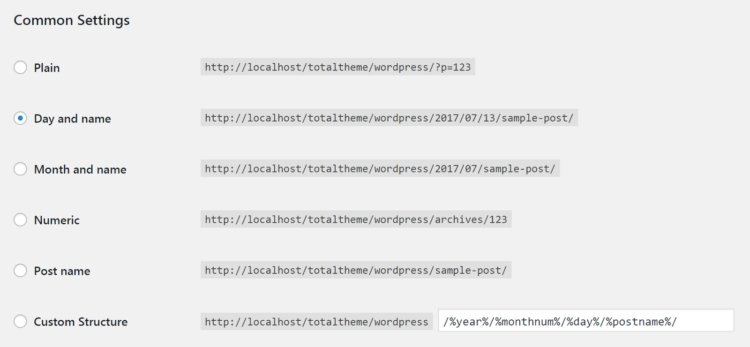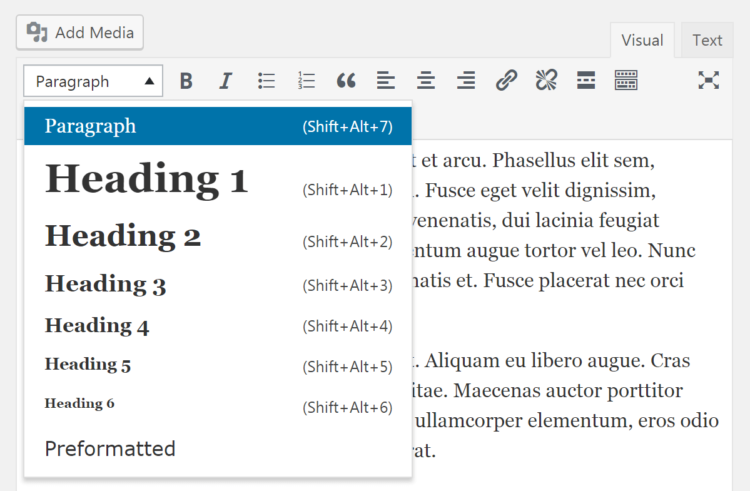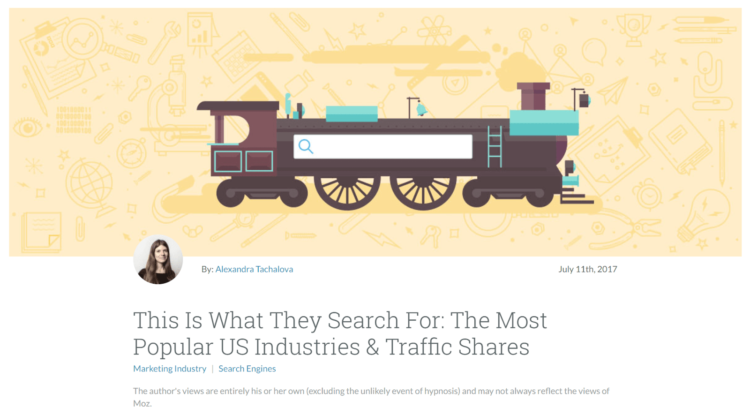You want as many eyes as possible on your site, whether your goal is to entertain and inform readers, promote your work, sell your products and services. Simply put, the more visitors you receive, the easier it will be to build an audience you can count on.
But where to start?
There are several ways to drive traffic to your site, but SEO (Search Engine Optimization) is one of the most effective. SEO is a collection of strategies and techniques designed to help your pages rank higher in search engine results. This increases the visibility of your site and can help you take off.
In addition, there are several simple ways to improve the SEO of your WordPress site, even if you are a beginner. In this post, we will explore 13 Simple Ways to Boost SEO on Your WordPress Website
An introduction to SEO (and why it is important)
Think about that. When you sit down to look for something on the Internet, there is a place you turn to a search engine. This means that for your site to be noticed, you must ensure that your site appears in Google searches and similar sites. The most important thing is that you want your site to appear as close as possible to the top of the list.
The best way to do this is through SEO, which is a wide variety of strategies and activities based on what we know about how search engines determine your ranking. Optimizing your site for search engines offers many benefits, including:
- A site that ranks prominently on the search engine results page (SERP) has greater visibility and the best chance of increasing traffic.
- A highly ranked website seems more credible and reliable.
- It will present more useful and relevant information to visitors since SEO tends to focus on producing quality content.
If you are new to SEO, do not hit the panic button. The creation of a WordPress site has already taken a big step because the platform is well optimized for search engines. In addition, there are several simple and beginner-friendly ways to push your WordPress site to the top of the leaderboard. Let’s take a look at these methods now.
[ Read: SEO Ranking: 6 Step To Boost Rankings by combining internal link and backlink ]
13 simple Way To Improve WordPress Website SEO
When compiling this list of SEO strategies, we begin with an assumption: you are busy. Therefore, these techniques are ones that you can implement now (no long-term commitment is required). Obviously, there are many other techniques, but this is a great place to start. And remember: you don’t have to use it all (although you can certainly do it), some should give your WordPress site a boost in SERPs.
In addition, we will focus on the advice addressed to Google, since Google is by far the most popular search engine and publishes so much information about its algorithms. That said, many of these strategies should also help you on other sites, such as Yahoo Search or Bing.
#1. Choose your hosting provider carefully
We are not saying this just because we are a hosting company. We say it because it is true: the hosting provider you choose is vital for SEO.
Because Google takes speed into account when ranking websites, a good web host can help you reach the top of the SERPs. Your host also affects the amount of downtime your site suffers and the physical distance between servers and visitors, which are classification factors. Last but not least, since Google gives HTTPS sites a small boost, you’ll want that too. In DreamHost, it’s free with all our plans.
If you have not yet created your site, choose a reliable and reputable web hosting provider. Even for an existing site, you may want to change hosts if your current provider does not meet these criteria.
#2. Pick a Theme That’s Optimized for Search Engines
Your theme is one of the most important choices you will make on your WordPress site. It determines the look and design of your site, can provide new features and also plays a role in your SEO. For example, your topic may affect the speed of your site, which (as we discussed) is vital. The way in which a theme has been developed is also important since clean code gives your site the best chance of SERPs.
Therefore, when choosing a topic, you should opt for one that has SEO in mind. These themes are often called “SEO friendly.” You can also search for a theme that offers features specifically designed to improve your SEO, such as new header tag options. Fortunately, there are many themes available that fit the project.
[ Read: 7 Google Ranking Signals: What REALLY Matters For Google Search Engine in 2019? ]
#3. Use a dedicated SEO plugin

If you are new to WordPress, you may not be familiar with the plugins yet. These are small pieces of additional software that you can install that add new features and functionalities to your site. There is a plugin to help your site do almost anything, including a higher ranking in search engines. In fact, there are many plugins designed specifically to improve the SEO of your site.
These plugins can provide small and specific functions, such as creating a site map (we’ll talk more about that in a moment). For best results, you can also opt for a comprehensive SEO plugin such as Yoast SEO that will add a full set of optimization-focused features to your site.
#4. Change your ” Permalink ” structure
Permalink is permanent URLs that point to individual posts, pages and other content on your site. They are what people will use to refer to and link to your site and their appearance is important. Clear and descriptive links that describe its content are easier for search engines and tend to increase ranking.
WordPress offers several automatic permalink options:

Some are based on numbers (such as Simple and Numerical options), which is not ideal as they convey little useful information to search engines. Instead, it is better to have the structure of the name of the post, as it clearly communicates what the linked content is about. You can easily change your permalink structure (or create a custom structure) by visiting the backend of your site and navigating to Settings> Permanent link.
#5. Create a site map
A sitemap is a list of all pages and other content of your site, usually organized in a hierarchy. It provides a quick way to see how your site is organized and what it includes. While these site maps are designed to help users navigate websites, their main goal now is to communicate information to search engine robots (also known as crawlers).
While adding a site map to your site does not directly increase your search engine ranking, it is still a valuable SEO tool. It allows crawlers to view each page of your site and understand how they relate. This makes it easier for search engines to crawl your site and present relevant content in user searches. Adding a sitemap to WordPress is simple: you can do it with a specific plugin such as Google XML Sitemaps, or through a comprehensive SEO tool like Yoast SEO.
[Read: Website Builder: How to Choose the Best Website Builder in 2019 (Pros & Cons) ]
#6. Use Heading tags throughout your content
While a site map is useful to help search engine crawlers see how your site is organized, it does not help them understand individual content. For this, you will need to use header tags. These are formatting options that you can apply to section titles in pages and posts.
You can see these settings in your WordPress editor, listed as Title 1, Title 2, etc.

Sing these headings to structure your content. It provides a visual benefit by dividing the text and making it easier to read. In addition, trackers pay close attention to the titles, using them to understand how their content is organized and what it is about. So, when creating posts and pages, be sure to use WordPress header options frequently and consistently.
#7. Build Your Content Around Keywords
You have probably found the concept of keywords before. These are short sentences that describe the subject of their content. For example, you can choose the keyword “easy recipes” for a blog post that shares simple recipe options for beginners. By doing this, you predict that many people will type the phrase in a search engine when they search for this type of post.
Choosing a keyword for each post or page and using it in several places, such as the title, heading, and content itself is a common way to communicate your topic to search engine crawlers and increase the chances of showing your content in relevant search content.
Obviously, you want to be smart about how you use this tool. For example, it is better to avoid “keyword stuffing” or force your keyword in many places so that it does not look natural or spam.
[ Read: WordPress Plugins 2019: 22 Essential Plugin For Website, Blogger ]
#8. Incorporate useful internal and external links.
Google and other search engines do not consider your site to be empty. Instead, they analyze how well it is connected, internally and with other sites. Using too many links in your posts and pages tells crawlers how they relate to similar content. It also encourages others to link to your site, which in turn tells search engines that your content is valuable.
As with keywords, it is a strategy that you want to use carefully. If you place too many links in your content or use too many links that point to irrelevant pages or simply to promote products, your search engine rankings are likely to be affected.
Instead, try to incorporate links where they fit naturally and direct readers to high-quality sites that already occupy a prominent place in the SERPs. The intelligent use of internal and external links is essential to achieve the best possible SEO results.
#9. Use Responsive Design on Your Site
More people than ever are using mobile devices to browse the internet. This means that your site should look and work as well on any type of device a visitor is using. You can ensure this by following the responsive design strategy; In other words, designing your site to react and adapt to each user’s device.
Responsive design is so important that Google uses it as a ranking factor. If your site responds, the chances of appearing high in SERPs are much better. For WordPress users, the best way to start a responsive design is to choose a theme that supports it (which many, if not most, now do). Don’t forget to check the other SEO features of each topic too!
[ Read: On-page Blog SEO: 12 Ways to Optimize Your Blog Content for SEO ]
#10. Optimize your images
Images are important for just about any website. They provide visual appeal and context, in addition to helping to divide the text and make it more readable. As you probably guessed, they can also have an impact on your SEO. On the one hand, the quality and size of your images can affect the loading speed of your pages, which is a Ranking Factor. In addition, crawlers analyze certain information attached to the images (such as file names and “alt text“) when they try to index and understand your site.
Solving these two problems will help you a lot to improve your SEO. First, be sure to optimize your images and other media so that they have the least impact on the performance of your site. Then, provide each image with a descriptive file name and alternative text (bonus points if you use a keyword in one or both places).
[ Read: SEO Tools: Ultimate List to Optimize Your Website ]
#11. Write long-format content when possible

When Google’s algorithms decide how to classify content, they pay special attention to its length. This does not mean that the shortest content ever has a high ranking. However, longer content has an advantage because search engines consider it more likely to be useful. In addition, the broader it’s content, the better it can communicate its theme to trackers through keywords, titles, etc.
Longer content is also valuable for readers, it can increase their perceived credibility and encourage visitors to spend more time on your site. Therefore, when creating content, try to make it as detailed as possible. There are several ways to do this, but the ‘skyscraper technique’, which improves existing content to make it better and more complete, is a method worth checking out.
[ Read: Website Traffic: 28 Way To Increase Website Traffic Fast 2019 ]
#12. Add and update your posts frequently
Beyond size, Google algorithms consider the frequency of content when deciding how to rank your pages. Of course, older and better quality content will work fine, but newer and “fresh” content gets a boost, most likely to be relevant to search engines.
Therefore, if you want your site to function consistently in SERPs over time, add new content regularly. Try to create a posting schedule to keep up to date and vary the types of content you create to keep you and your visitors interested. Also, don’t overlook old posts and pages. Updating existing content requires crawlers to re-evaluate it and to give it higher prominence than pages that never change.
#13. Focus on quality content.
When Google and other search engines create complex algorithms for site ranking, their goal is to help the most relevant and useful sites get a high score. Specific ranking factors and their effects change over time, but this underlying theme remains constant. If you want to succeed with your SEO efforts, you should focus on creating quality content instead of trying to fool the system.
We have already discussed long-format content, which is a solid way to increase the quality of your posts and pages. However, there are many other ways to achieve this goal. For example, consider what your target readers want or need more, and focus on delivering these things to your content. Also, be sure to check the facts carefully and review everything you add to your site: the details are important!
Moving the SERPs
SEO covers a wide range of strategies and techniques, so it can be a bit intimidating. Fortunately, you don’t have to become an SEO expert to help your site rank higher in SERPs. If you want to start seeing results, just follow some simple tips.
Obviously, choosing WordPress as your platform is the perfect first step to create a well-optimized website. Then, choose the right host, select a suitable topic and consider choosing one or more specific plugins. By implementing these strategies (in addition to the rest of the suggestions in this list), you will be on track to improve the visibility and traffic of your site.
Do you have any questions about how to improve the SEO of your WordPress site?
